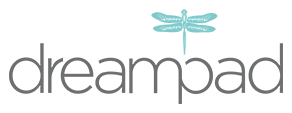Taking a nap is no longer reserved for grandparents and toddlers. Naps are for anyone who values their physical and mental health. But, there’s an art to napping. Too much time and you could end up feeling worse than when you laid down. And, too little, and the nap is just a waste of time. You also want to make sure that it doesn’t end up affecting your sleep at night. So, let’s take a look at how to take a nap during the day, without disrupting your nighttime sleep.
The Benefits of Napping
The stigma associated with napping has caused people to feel guilty for lying down during the day and trying to catch a little shuteye. Fear of being deemed lazy or weak has forced people to “power through” even though fatigue is making them slower and more prone to make mistakes.
However, a nap can improve your creativity, productivity, and mood. Napping is great for mental as well as physical health, reducing stress and minimizing the risk of more severe issues like strokes, heart attacks, diabetes, and obesity.
The Nasa Nap
If there’s one profession that requires the person to always perform at their best, it’s Nasa pilots. In space, there’s no room for error. Studies have shown that a 26-minute “Nasa” nap can enhance performance up to 34%, and increase overall alertness by 54%.
How to Take a Nap
The biggest question in the quest for the perfect nap is how long it should last? The answer will depend on what you’re looking to get out of the nap. Obviously, the goal is to wake up feeling more refreshed and alert. To understand how to get the benefits of a nap, you have to understand the five-phase sleep cycle.
Short naps
Depending on how much time you have, a 20-minute nap may be all that the day allows. Luckily, it is all you need to wake up feeling more alert. A short nap will improve your concentration, mood, and motor skills.
If you’re also looking to boost your creative thinking, try extending it to 30 or 45 minutes. But, be careful, anything over 45 minutes, and you could have a hard time waking up.
Waking from Slow-Wave Sleep
The trick to an effective short nap is to remain in the first two stages of sleep. Stages 1 and 2 are a light-wave sleep. It will help you wake up more easily. If you sleep for too long, your sleep will start to enter stage 3-5, which are the slow-wave sleep stages, and pulling yourself awake in the middle of one of these can leave you feeling groggy and disoriented.
Long Naps
If you can, the best nap to completely clear your mind, restore your brain and body, and help you make up for a bad night’s sleep is to lay down for a 90-minute nap. If you can get an hour and a half of daytime sleep, you’re going to hit all sleep stages, including REM. If you time it right, you should be able to wake up feeling refreshed and alert, reaping all the benefits without disrupting your nighttime sleep routine.
Effective Sleep Aid
When you’re stressed and tired, falling asleep is the hardest part of taking a nap. You know you need sleep, your body and your brain are crying out for rest, but the stress of being tired is preventing you from taking a nap.
The Dreampad Music Pillow is an effective sleep aid that has helped many people fall asleep quickly and stay asleep. If you need a nap, the Dreampad can help you get the right amount of sleep. And, if you have trouble falling and staying asleep at night, the Dreampad can help you get the necessary hours every night.
